a reincarnation of classic Nintendo Hardware
To make the experience fit your profile, pick a username and tell us what interests you.
We found and based on your interests.
Working with just calipers, I did my best to guess the sizes of the fillets. Overall, it turned out pretty well! R.O.B's new head is 3 parts printed on a Form 1+. I have to admit that I really like the workflow that the printer can offer. Most of the parts were printed while I was asleep :)
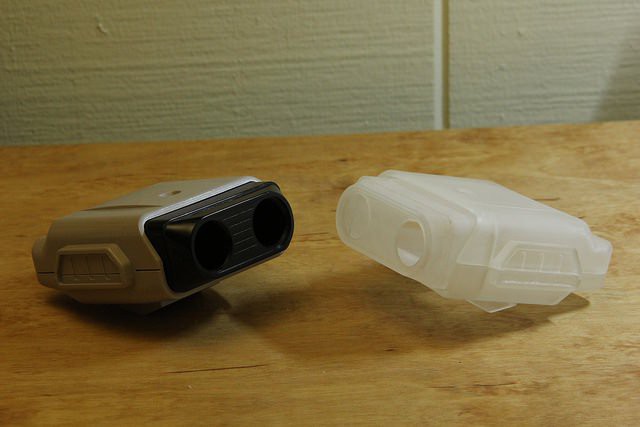
Overall Form 1+ prints do tend to distort both from there own weight and from the "peeling step" as each layer is being printed. Luckily, the parts aren't fully cured when printed, so I can ensure that they'll fit together before curing them completely. I'm still learning the tricks of the printer, but I'm impressed by how quickly I've been able to get results.
3D Printing is very much a craft that I have yet to master. Here's my first shot at printing the head model (3 pieces) and wet-sanding it lightly with 320 grit. Oddly enough, the new version actually fits cleanly onto the old neck from the model I've borrowed.
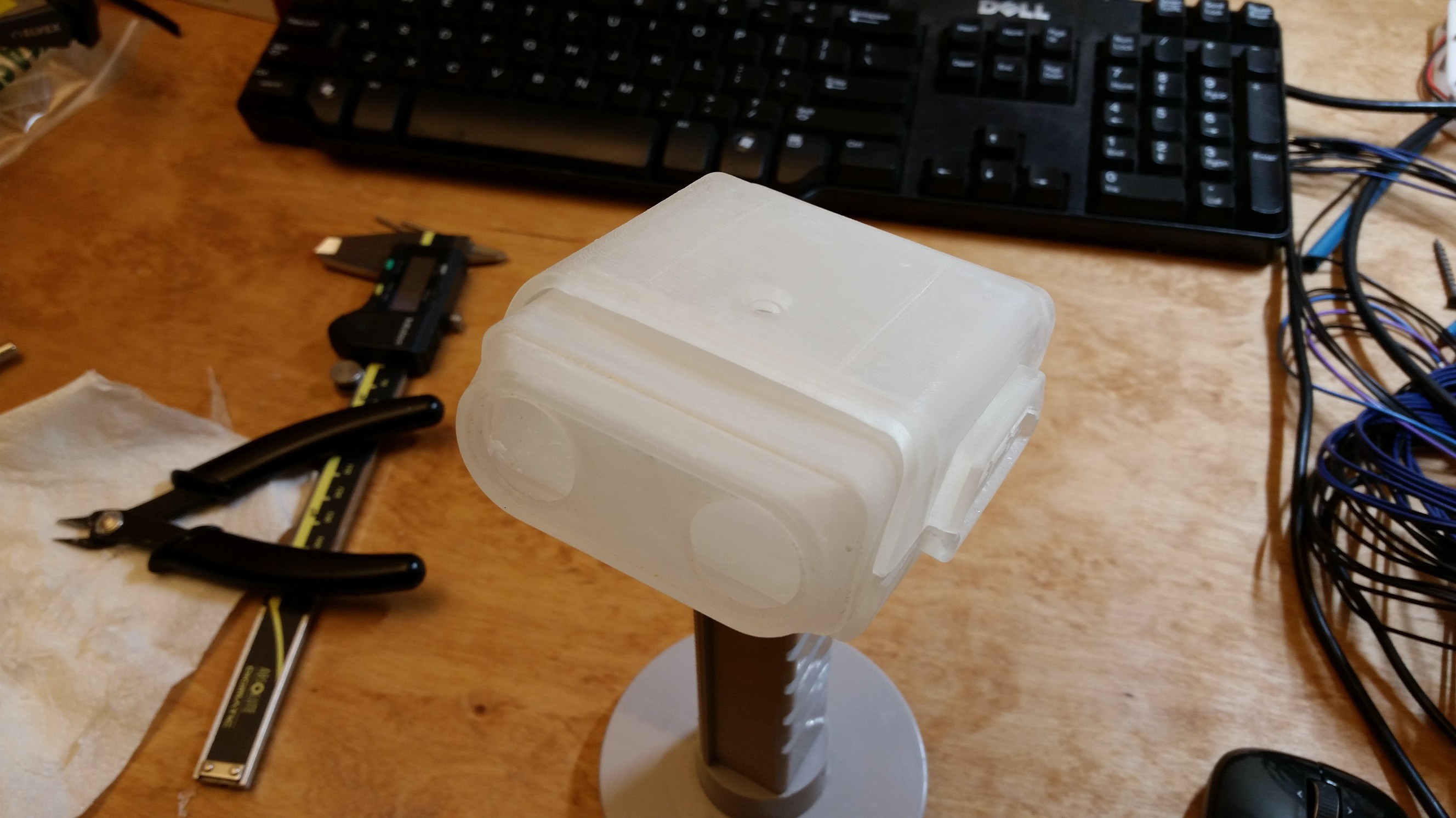
Progress so far has been a firm lesson in surface modeling (as opposed to modeling with solids) in Solidworks.
I'm currently debating on fabrication techniques for the shell. So far, I'm looking to either 3D print the shell itself with a resin-based printer or 3D print molds from which I can cast a fiberglass replica.
I haven't run any calculations yet to figure out whether or not the 3D printed material will have sufficient strength to take a few bumps from driving it around. If not, I might consider a DIY attempt at electroplating to increase tensile strength since most of the parts are thin-walled.
A fiberglass composite casting would be more-than sufficient to take a brief beating, but I'll lose the convenience of adding internal features to the inside since I'm only casting the outer surface.
Random thoughts aside, here's a quick peek at where he's at so far:
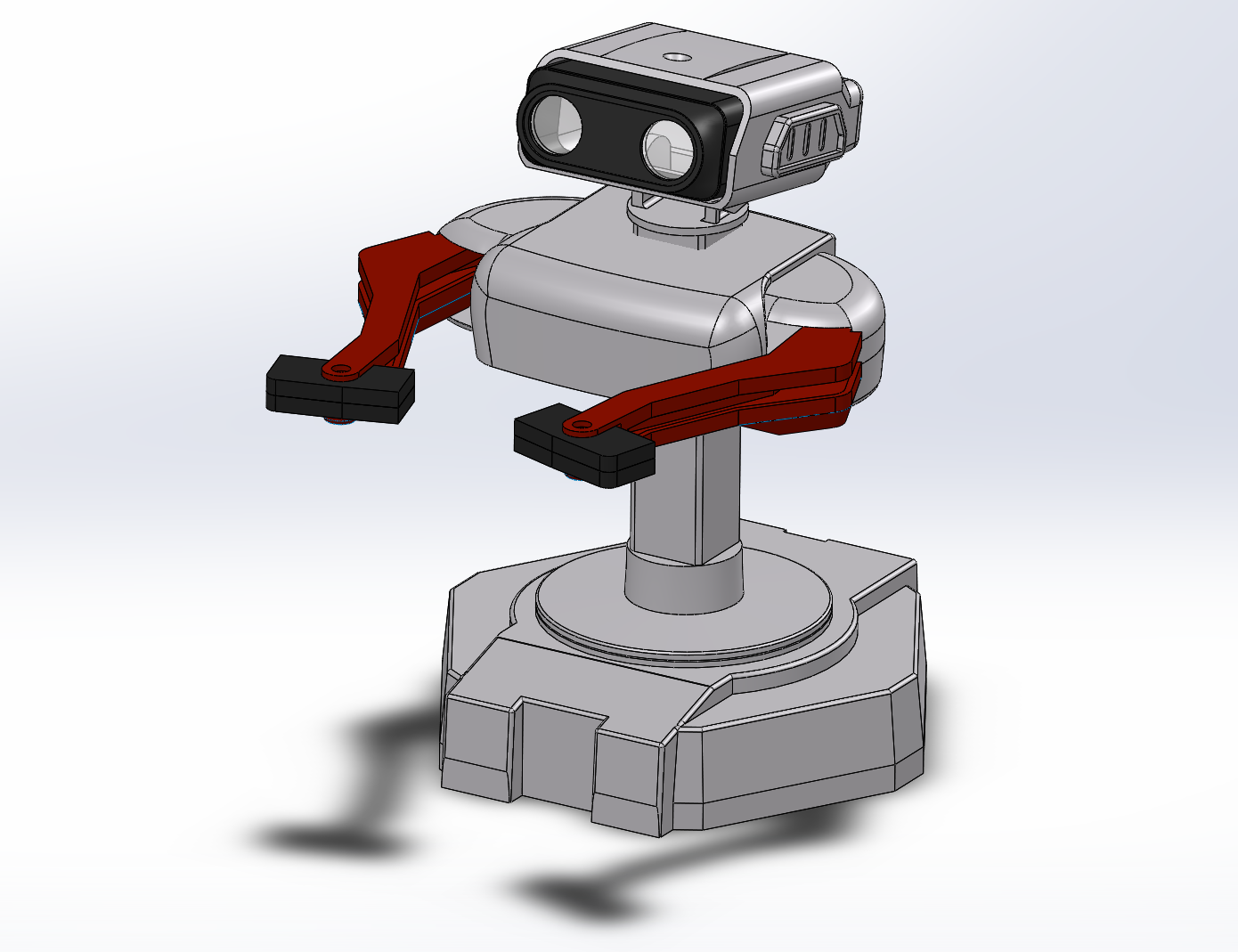
(R.O.B. sold in Japan arrived boxed with a slightly different color scheme)
This technique isn't anything new, but it definitely has a place in capturing R.O.B. from his original pieces. With a scanner handy, I took copy of the inside of R.O.B.'s left arm and imported the image into Solidworks. From here (or with any vector program, like Inkscape) I can capture some of the relative distances between features and scale to a known dimension. There are some caveats to this technique: for example, the scanner really only reveals distances for features at a constant height away from the scanner. For this reason, capturing flat features is my primary use for this technique. Furthermore, I wouldn't use this technique for 0.001" accuracy, but in this case, it's good enough.
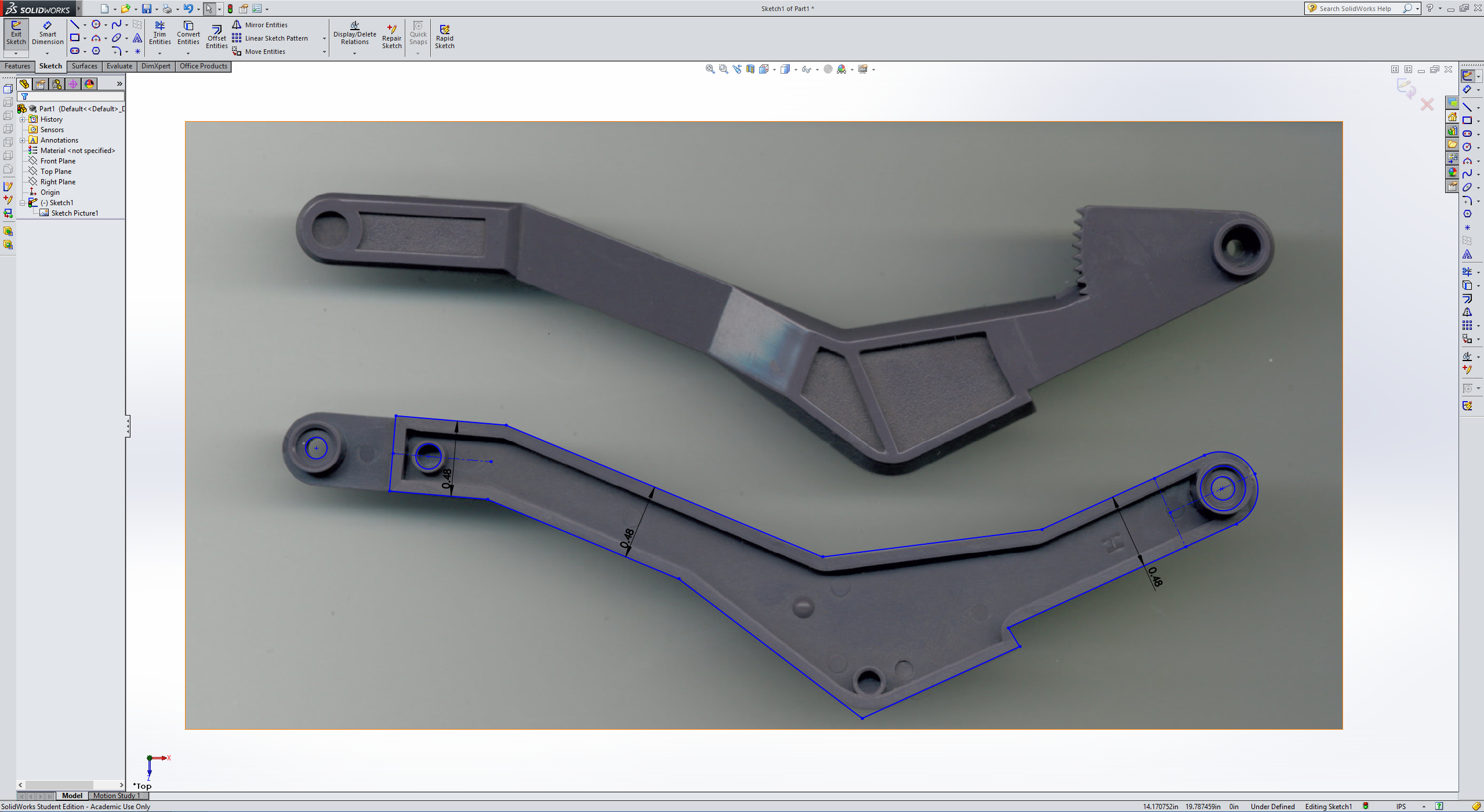
If you have a CNC (or manual) milling machine nearby, you have the option of a similar (and far more accurate) technique than this one here: you can simply clamp your part into the vice and index all of your features by moving the mill head to each feature with a tool like an edge-finder.
Here's a first pass of the head. Right now, I'm aiming to break down the original model into its characteristic features. Most of these features are easy to extract, like the fillets that round the edges of the overall shape. The tricky part is nailing down the order in which these fillets were put into the original model. For the most part, the fillet dimensions appear to be fractional values from the imperial scale (i.e: 1/8th, 5/16th, etc.). So far, all fillets look acceptable and characteristic of the original except for one set of fillets in the lower corner. The only way to tell the difference, though, is to do a side-by-side comparison of the original model. Otherwise, the overall features look very acceptable.
Since I'm only using calipers, I don't expect my estimates of angles to be spot on. That said, if I do happen to pick up the right tool to measure angles and fillet radii, I can readjust them later, provided that I include them all in the CAD.
Lastly, I'm only modeling the outside of R.O.B. with tight tolerances and detailed measurements. Since I'm investigating how much space I can squeeze out of his interior, I'll leave out the channels and ribs on the inside of the model unless I need them later.
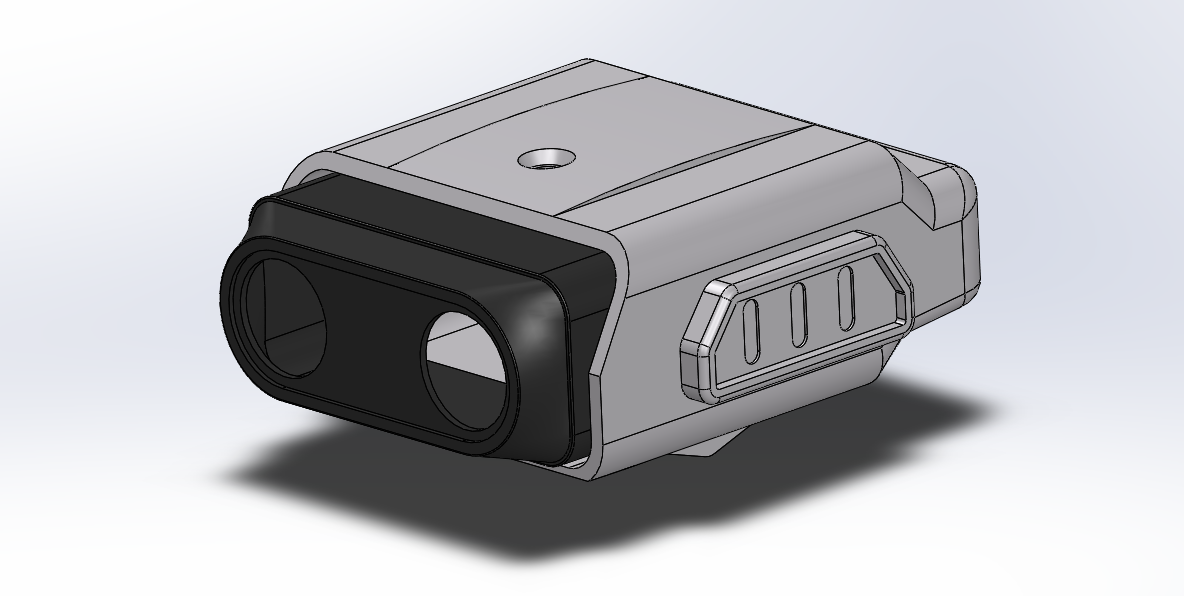
Until then, cheers!
To start leap forward from 1985, I'm assembling a CAD model. I'll sacrifice a couple minute features, but I'll do my best to nail the overall dimensions. As I start the CAD, I've already noticed a few odd features:
Create an account to leave a comment. Already have an account? Log In.
Man, (like most commenters) i always wanted that robot as a kid, but never got it :(
Any chance your concidering to share your CAD work? or is that sorta scary due to Nintendo copyrights and whatnot? i would love to have access to even the shell of it, then i can just make my own hardware to go with it (since i dont have any of the needed nes games i would just make it a fun little robot, possibly beer-butler)
Yeah, I'm borrowing one from a friend, and duplicating the shell is partly because of how tough these guys are to find. Aye, I'll look into violating any possible copyright infringements (unless anyone knows off the top of their heads?), but my plan is to share the design files once it's finished. (I'm not intending to start making cash off of this guy--especially considering that his shape isn't mine to sell.)
Hehe, I'm feeling old now too. I remember R.O.B was one of the accessories only the "rich kids" had - I had a base setup which was just two controllers and Super Mario Brothers. I know a few folks wound up just pressing the buttons on the second control with their feet rather than wait for Rob to spin up those tops in gyromite.
"only the 'rich kids' had" right? I distinctly remember a kid down the block who had one... OTOH the only game I remember playing at his house was Excite Bike, which the robot never had part in. As I recall, R.O.B. was sitting on a shelf, nowhere near any controllers... Wish I'da recalled it *that way* back then! Maybe then R.O.B. wouldn't'a been so appealing :)
OTOOH: there's something to be said for the imagination... I thought that robot could do ANYTHING... and now, 20+ years later, I've learned that it could only play two boring games.
Haha, nice find! I actually didn't know too much about R.O.B. until a few weeks before I decided to start taking him apart. It turns out that he's actually a big unsung hero for the video game industry of the 80s. I'll have to do a quick post on his history in the future.
I've seen it first here on this project ;) with only two games it can't have made a big impact though. I'm looking forward for what you will write about it.
I had to look that one up and found this hilarious video of angry video game nerd https://www.youtube.com/watch?v=rvCCgPDcnvQ
Become a member to follow this project and never miss any updates

 AVR
AVR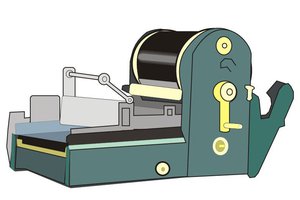
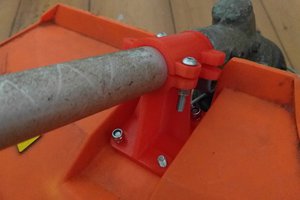
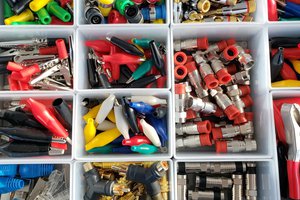
Are you still working on this project?